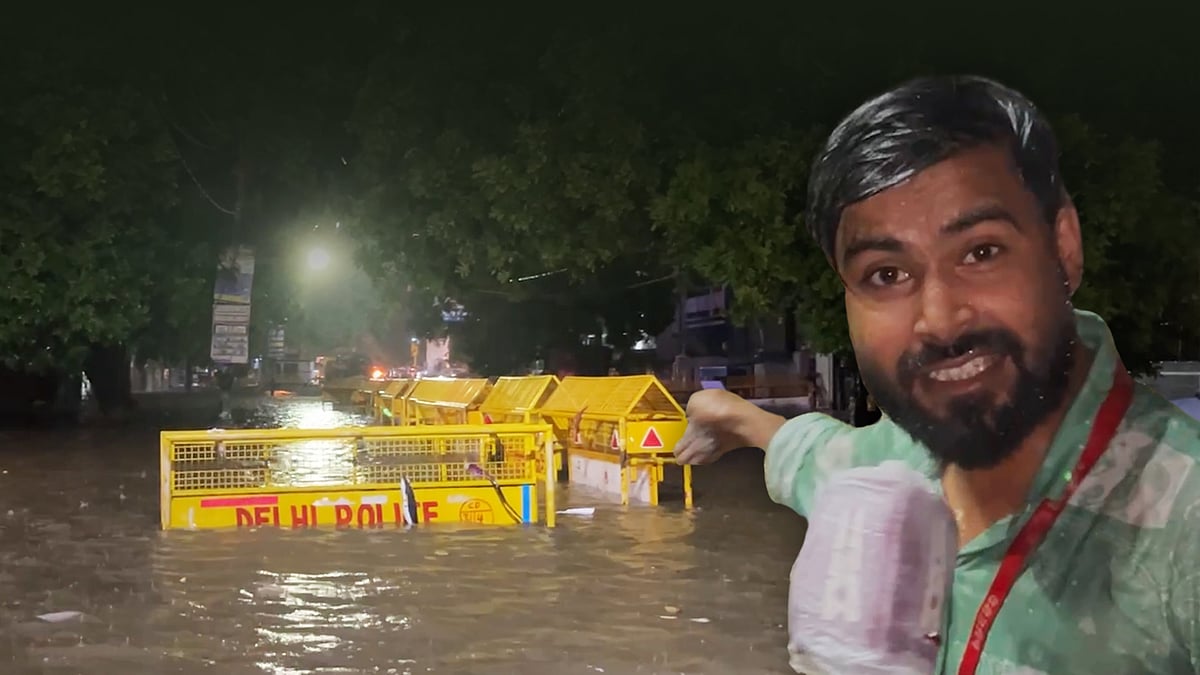Without building bye-laws, there will be only floods and fires, not smart cities
Khan Market is a glaring example of urban malaise.
The coaching centre deaths in Delhi aren’t unprecedented. Twenty-seven years back, on a placid summer afternoon in south Delhi, 59 cinegoers perished in a fire at Uphaar theatre because all exits save one were blocked. Extra seating, in contravention of the approved capacity, was created by blocking the exits to generate greater revenue.
Through the intervening decades a series of such incidents have occurred at a fearful frequency. But it’s amply evident that there has been no resultant learning nor have the perpetrators been punished severely enough to instil a fear against transgression of the law.
Both greed and need contribute to this malaise.
A glaring example is the high-end Khan Market in central Delhi. Patronised by the city’s high society and home to numerous well known brands, it was originally planned as a mixed land-use development, with a retail market on the ground floor and residential apartments on the upper levels to resettle post-Partition refugees. Post liberalisation, in the 1990s, it transformed into a fashionable shopping and dining precinct. And pressure has seen the upper level residences converted, almost without exception, to house restaurants, cafes and showrooms.
While the usage of what were once dwellings for families has changed, the ingress and egress is still dependent on the same narrow staircases spilling into a service lane. Spaces intended for a family of five to circulate now pack in up to a 100 customers and staff in each of these facilities. In order to comply with building bye-laws, less cover is reportedly shown by restaurants on floor plans. It is not difficult to imagine that these staircases and the lane they open into shall be woefully inadequate in case of a fire or other emergency requiring evacuation. Parking that is blatantly in excess of the number of vehicles officially provided for would hinder fire tender access.
Since 2011, a discussion has raged with regard to fire safety in Khan Market at various levels of government. While both the Supreme Court and the Delhi High Court have expressed concern, nothing has changed on ground.
And knowledge of other tragic incidents as had occurred at the Kamala Mills complex in Mumbai or at AMRI Hospital in Kolkata have done little to either spur the stakeholders into compliance or the patrons to boycott, for their own safety, what could be considered India’s fanciest tinderbox.
In 2015, Prime Minister Narendra Modi launched the Smart Cities Mission. Ambitious in scope and generously funded, this urban renewal and retrofitting project was intended to improve infrastructure and drive economic growth in around a 100 hand-picked cities in the country, its motivations to be boosted by effective deployment of technology and data analysis.
However, the chassis to such ambition is documentation. The frame-work for effective documentation towards a planned and designed built environment are the building bye-laws. But most construction and spatial usage in Indian cities, as is repeatedly revealed by way of the discussed accidents, makes a mockery of these governing laws.
Indian cities accommodate 31 percent of the country’s population as per the 2011 census. By 2030, this figure shall grow to 40 percent. In order to govern such a vast population while providing a reasonable quality of life, it is essential that urban governance and management be effective. The very foundation of governance is adherence to the law. The law, in turn, is the vocabulary of social communication.
The well known American historian, Lewis Mumford had termed the city as ‘a theatre of social action’. It is thus imperative that if social action has to be conducted effectively, the administration must ensure that the laws are followed in the design, construction and subsequent usage of buildings. It is on these ‘building blocks’ that any grandiose motivation of ‘Smart City’ governance can be achieved.
In absence of suitable control, the country shall witness many more tragedies like the one which unfolded in the west Delhi basement last month.
The writer is an architect in independent practice. Having graduated from Columbia University in New York City, he designs, writes and teaches in New Delhi.
If you’re reading this story, you’re not seeing a single advertisement. That’s because Newslaundry powers ad-free journalism that’s truly in public interest. Support our work and subscribe today.
 No official questioned, MCD files unseized: Why HC handed over coaching centre probe to CBI
No official questioned, MCD files unseized: Why HC handed over coaching centre probe to CBI.jpg?auto=format%2Ccompress) Before Delhi coaching hub deaths, plea in HC pointed to 18 buildings ‘intact’ despite MCD ‘demolition’
Before Delhi coaching hub deaths, plea in HC pointed to 18 buildings ‘intact’ despite MCD ‘demolition’ Days after 3 deaths, Delhi coaching hub flooded again
Days after 3 deaths, Delhi coaching hub flooded again